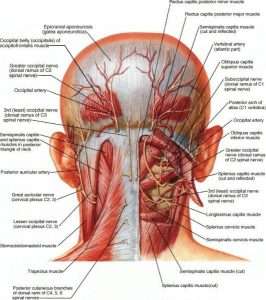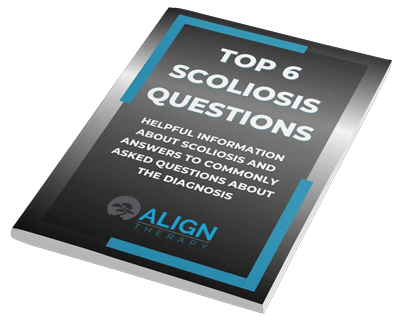Fall in Utah comes with quite a few headaches. Going back to school is one for many of my patients, as well as for their parents. For some, just the change in seasons brings on allergies that lead to headaches. For others, headaches are a part of every season.
Lately, I have been seeing many headache patients and it always surprises ME that it surprises THEM that Physical Therapy can help. I guess when you think of headache treatment, most of the time you don’t think of going to a PT. Most usually think of going to their General Doctor or maybe a neurologist.
Physical Therapy Can Help Cervicogenic Headaches!
The cool thing is that there are many patients we can help. The key is to determine if your headaches are the kind we can treat.
The kind of headaches that respond the best are called cervicogenic headaches. This means there is a muscle, joint, or something else in the neck contributing to development of the headache.
If you feel like your headaches are MIGRAINES, please continue reading! Many times, cervicogenic headaches can be triggers for migraines. I have seen some amazing results with migraine patients.
Here is a quick overview to help you decide if Physical Therapy treatment can help YOUR headaches.
1. Pain or Tightness in the Neck:
 This is a good indicator that the neck is contributing to the headaches. Does your neck feel tight or hurt when you tip it side to side or rotate your head? When you push on the muscles does it cause pain or even reproduce your headache?
This is a good indicator that the neck is contributing to the headaches. Does your neck feel tight or hurt when you tip it side to side or rotate your head? When you push on the muscles does it cause pain or even reproduce your headache?
There are many structures in the neck that can cause pain and refer that pain into the head. When these muscles, joints and ligaments are treated, there is usually a significant reduction in how often and how bad the headaches are.
2. Limited Motion in the Neck
 Do you have stiffness and feel like you lack motion when you move your neck? Do you have problems checking your blind spots while driving? Does looking up hurt?
Do you have stiffness and feel like you lack motion when you move your neck? Do you have problems checking your blind spots while driving? Does looking up hurt?
Limited motion indicates your muscles are tense and tight and could be causing pressure on nerves that go up into the head. It also could mean that you have irritated joints or other structures that are causing more tension.
Once you start to gain mobility, the intensity and frequency of headaches will decrease, and you will notice less pain in the neck.
3. Headache on one side
Many times, the tension and stiffness in the neck will be more on one side than the other, causing a headache on that side. This may spread to the other side as well, but many times it begins on one side.
4. Forward Posture
As you read this, chances are you are on a device…either a computer or a phone. How is your posture? Are you upright with your head centered over your shoulders, or is your head tipped forward and your shoulders rounded?
 Your head is like a bowling ball that weighs 8-10 pounds. When that bowling ball isn’t centered directly over the spine, it takes significantly more muscle work to maintain. This tension causes muscle tension in the neck and upper back that contributes to headaches.
Your head is like a bowling ball that weighs 8-10 pounds. When that bowling ball isn’t centered directly over the spine, it takes significantly more muscle work to maintain. This tension causes muscle tension in the neck and upper back that contributes to headaches.
To check your posture try standing with your back against a wall with your feet about 8 inches away from the wall. Can you get your back, shoulders, and head against the wall comfortably? Now, try raising your arms like you are making a vertical snow angel. How high can you get and still keep everything contacting the wall?
If you have difficulty with the exercise above, you would probably benefit from some posture training.
5. Pain at the Base of the Skull
Take your fingers and push on the muscles at the top of the neck just below the skull. Does this A) make your headache worse… or B) reduce the pressure? Also, are the muscles there tender to the touch? 
If you answered yes to the above, then chances are you are having tension in the upper neck. The small muscles here go around nerves called the Greater and Lesser Occipital Nerves. These nerves go up and over your head and are a primary origin of cervicogenic headaches.
Tightness in this area can pinch on the nerves and cause pain into the head. This can be very painful, even like a migraine. These are often confused with migraines but are very treatable.
If any of the above sound familiar, then you are a great candidate for treatment addressing the neck problems described.
Treating headaches is one of the most rewarding conditions I treat. It truly changes people’s lives! The crazy thing to me is how many people have no idea we can help.
Suffering with headaches? please take a moment to look at the 5 tests above.
I know you have probably tried many types of medications and have probably even had some relief with them. What if we could get to the underlying cause of the headache so it doesn’t come back? How would that change your life?
Even if you struggle with migraines, there is still hope! Many times, muscle tension is a trigger for true migraines. If we take care of the trigger….well, you know the result!
If headaches are ruling your life, PLEASE consider addressing the muscle component. There are so many things that can be done!
Stretching, posture strengthening, ergonomics, manual therapy, ASTYM, Dry Needling, etc. are all things that can help reduce the pain and keep it from coming back.
Thanks for reading!



